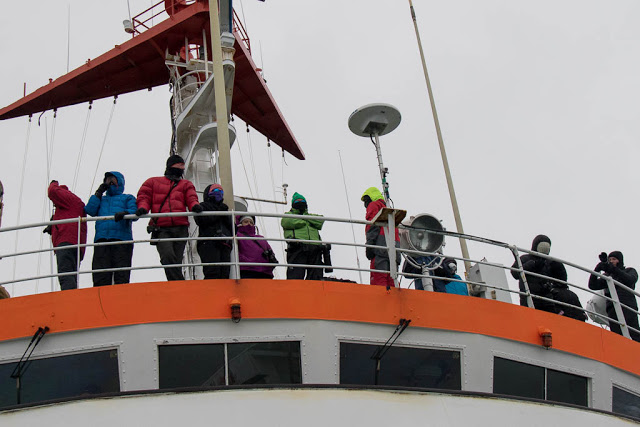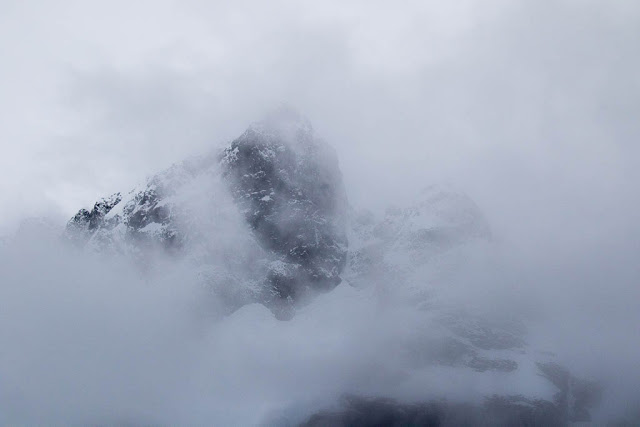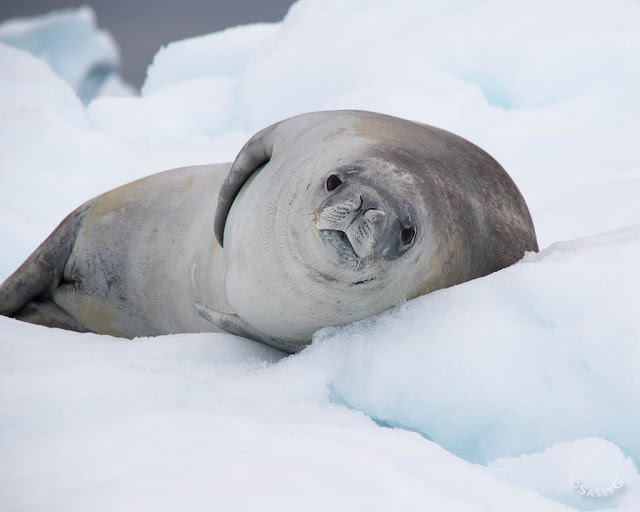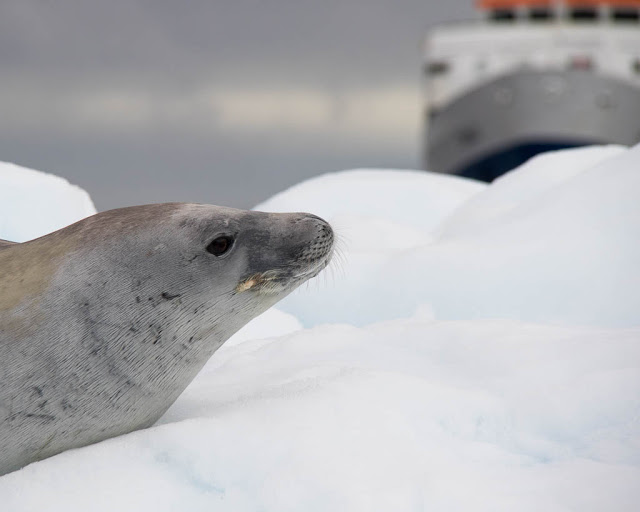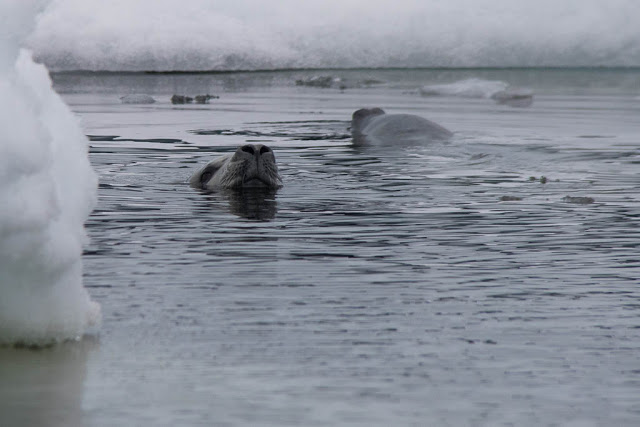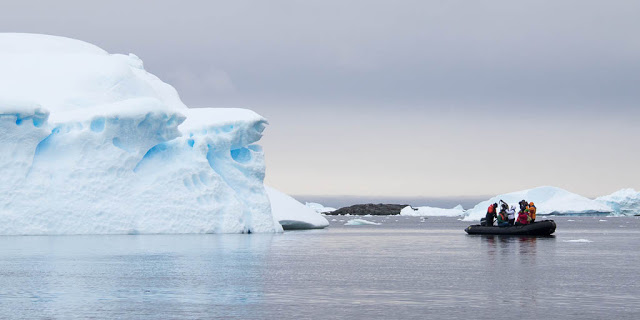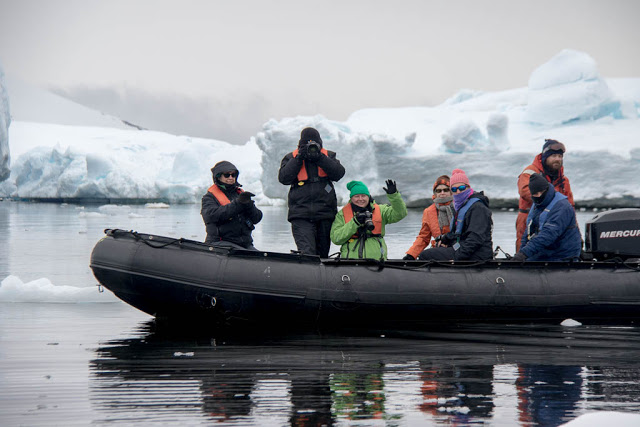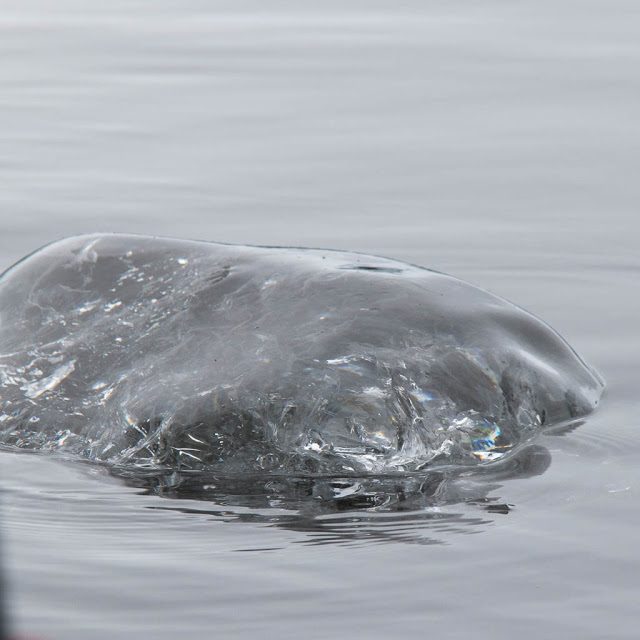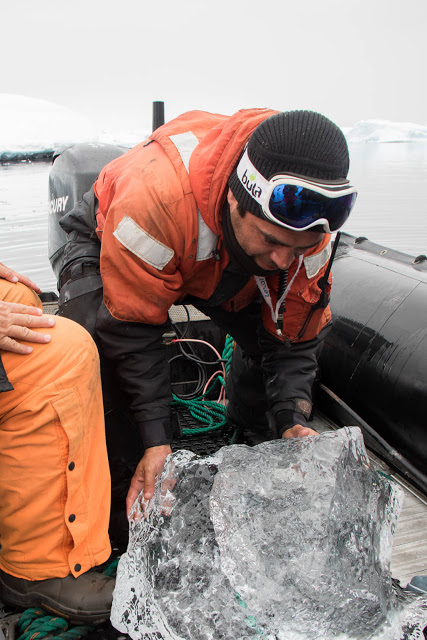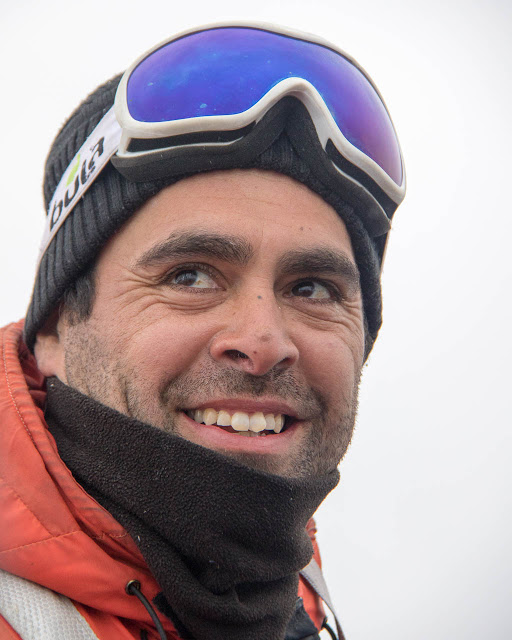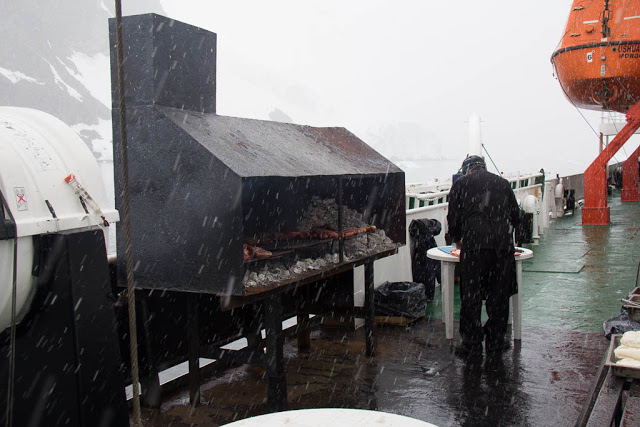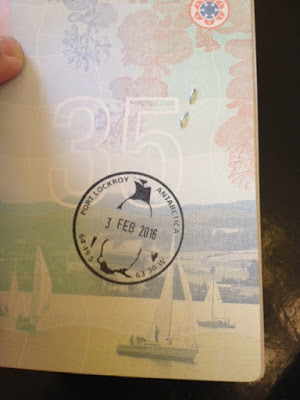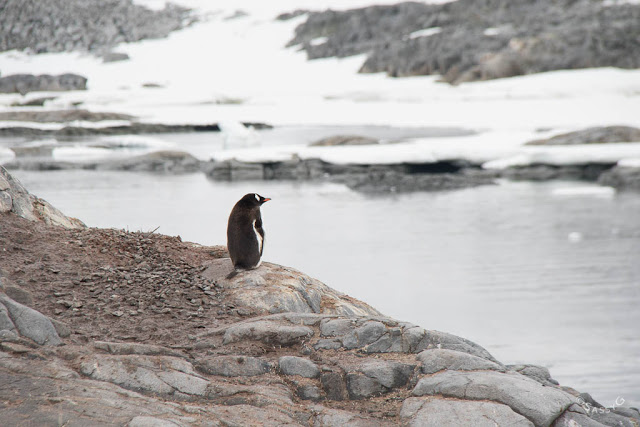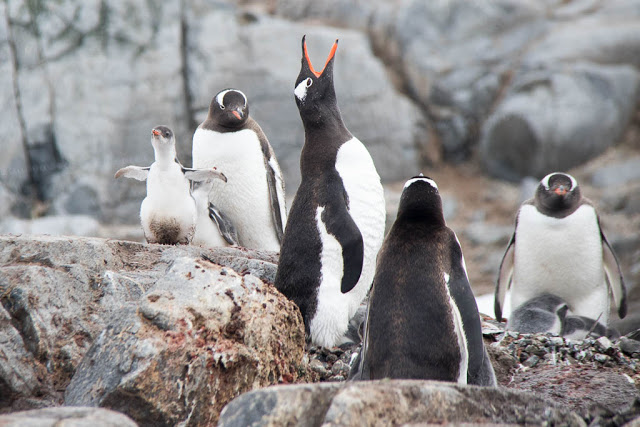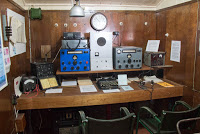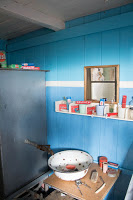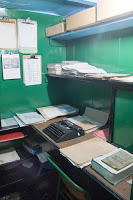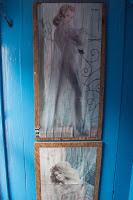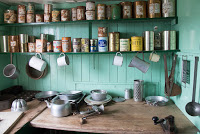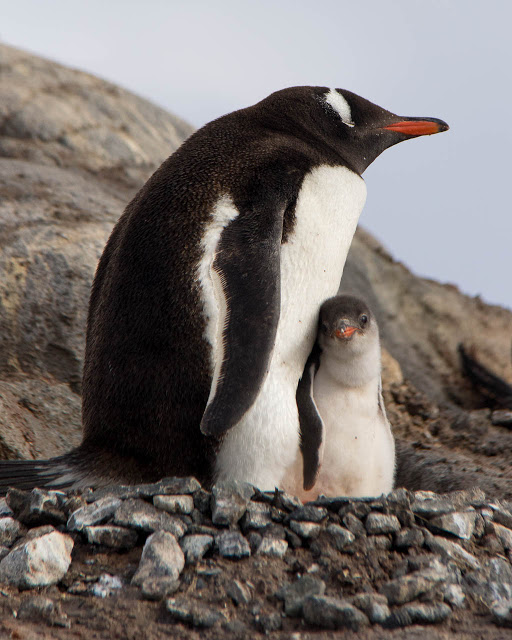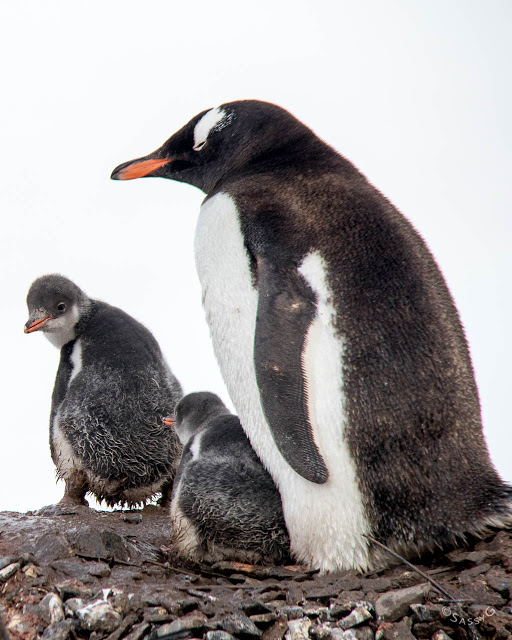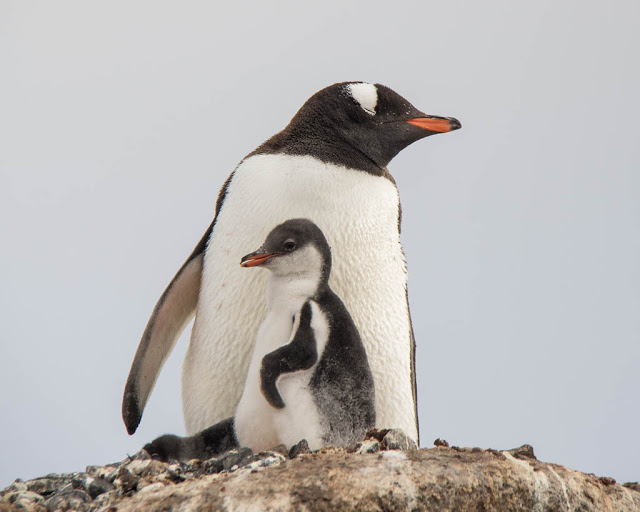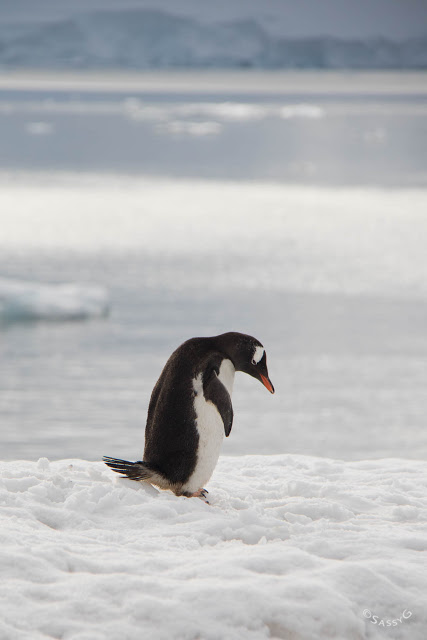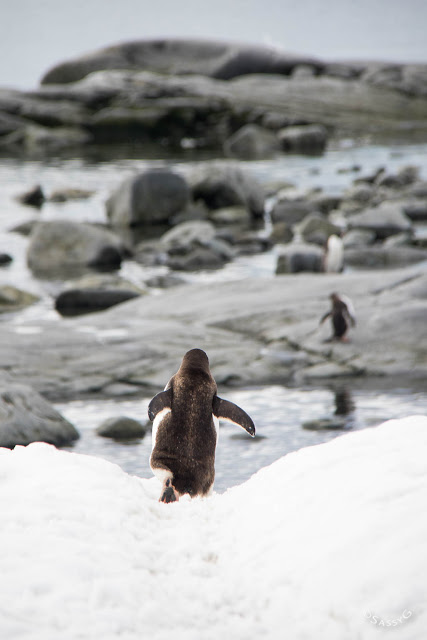Day 20 – Lemaire Channel, Pleneau Island and Port Lockroy
We had an early morning wake up from Monika, inviting us on deck to watch as we started to navigate the Lemaire Channel. This stretch of water is apparently quite scenic, and navigation is entirely dependent on the weather as it can be too full of ice to get through. We all donned our cold weather gear and climbed out of bed to see what we could see.
Which wasn’t very much.. On this occasion there was enough water and not too much ice, but far too much fog to make
out very much. The captain got us through safely but ever so slowly.
After breakfast we went out on extended zodiac cruises around Pleneau Island. The seals were out and about doing their thing, in and out of the water. Our guide Leandro told us that he hadn’t seen this many crabeater seals since his first year in the Antarctic.
A few of the zodiacs also went fishing for black ice. Unlike the beautiful blue ice in the glaciers and icebergs, some ice is almost colourless. The air bubbles in the ice have been pressed out through long compression. With help from Linda our boatswain (I think it was Carlos but I terrible with names) managed to bring a big chunk aboard. Later it would be used in the bar to go with bourbon or scotch, reportedly making crackling sounds as it melted.
In the other zodiac Alex was convinced to be the one to stick her arms into the water to put out a big lump. I don’t think I would have been game, but as she said, the ice was colder than the water, which makes sense when you think about it.
Back on the boat we got to watch the chefs preparing bbq* in the snow.
This may sound stupid, but I really hadn’t expected to be snowed on while in the Antarctic. It is summer after all. This was a bit special as a number of people on board had never been snowed on before. It was quite special, especially as you could watch it come down while in the cosy comfort of the bar, and you knew you wouldn’t have to be trudging through slush any time soon.
There were vegie kebabs for the vegetarians, although I think perhaps they could have used a little longer on the grill. It was the most elaborate way of preparing sausage in a bun that I’ve had in a while.
Visibility was going to continue to be poor, so in the afternoon Monika had arranged for us to visit Port Lokroy. Kelly was very excited. Port Lockroy is one of the operational post offices here in the Antarctic, and many folk were busy preparing their postcards to send. From here they would travel back to the UK before then being dispatched to the rest of the world.
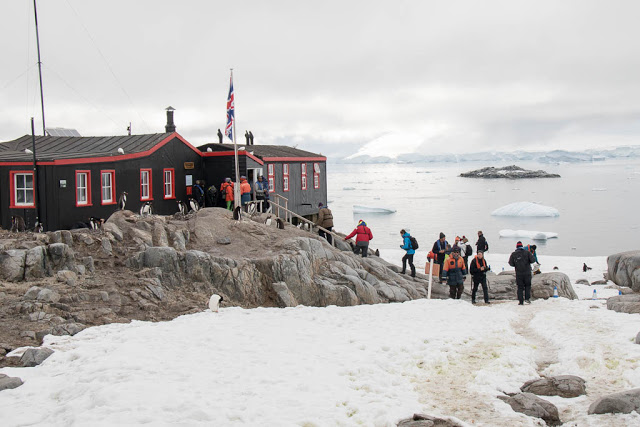
Port Lockroy used to be a secret British military operation in the 1940s. It is now staffed during the four months of summer by a team of four volunteers. So far this year they have had 18,000 visitors come through.
The operation is a post office, shop and museum. I was amazed how excited some of the passengers, and crew for that matter, were to be able to shop. I’m not much of a shopper so was more interested in the museum and the penguins, but the British Antarctic Heritage Trust did well out of Kingsley and I and the rest of the complement from the Ushuaia.
In return some of the volunteers were able to make use of the amenities aboard our ship. The base does not have running water for things like showers (though I’m not convinced they share a bucket for their ablutions). Just as volunteer Laura came aboard to talk to us there had been an announcement that the ships water would be offline for a while which had us all a little concerned for her, but apparently that was rectified in time.
The best part of the visit was that we got an Antarctica stamp in our passports.
Our visit to Port Lockroy got me thinking. Even though I was the furthest away from any city I could possibly be, I felt less remote in Antarctica than I had sitting in the Mitchell Plateau in the Kimberley. I think that it may be to do with the nature of each place. It is possible in the North West of WA to be alone. You could grab a swag and sleep under the stars, travel for days by foot or car in some spots without seeing anyone. And if you do that, and you’re prepared, you’ll be fine.
In the Antarctic being on your own would kill you. You simply can’t survive for long on your own. In our case we were traveling as a group, and we had one staff member for every two passengers aboard. Even the four volunteers at this base where seeing a boat load of tourists just about every day. That was reflected in that some of the vollies came from retail backgrounds rather than what I might have expected, scientific.
And the same experience is true for many of the creatures that live down here. Penguins live in colonies, krill make up half of the world’s biomass. It’s a little different for pelagic birds and leopard seals, but everything else tends to form groups.
On a personal level I am attracted to the solitary figure, a sensibility to which I can relate.
The museum part of the base was sweet, a representation of yesteryear. I haven’t seen a typewriter in a long while and the raunchy pictures on the door of the head, well see for yourself.
And of course there were penguins. And some kind of pigeon I didn’t get any good pictures of. I spent ages trying to get a decent shot of this guy and the flag but really, it was too tall and he was too short and I didn’t have a fish eye lens. I felt better when Alex said she hadn’t managed it either. She may have been lying to save my feelings, for which I will be forever thankful.
The babies here were a little younger, staying closer to mom and pop. Very cute though I think you’ll agree.
As we returned to the ship in the early evening the light was breaking through the cloud,s illuminating the landscape in a way that took your breathe away. What a privilege to be in such a place.
*Perhaps one of the best parts of writing up this blog is that I
discovered some pictures that were still on a memory card I hadn’t
downloaded. All thanks to the missing BBQ shots.
